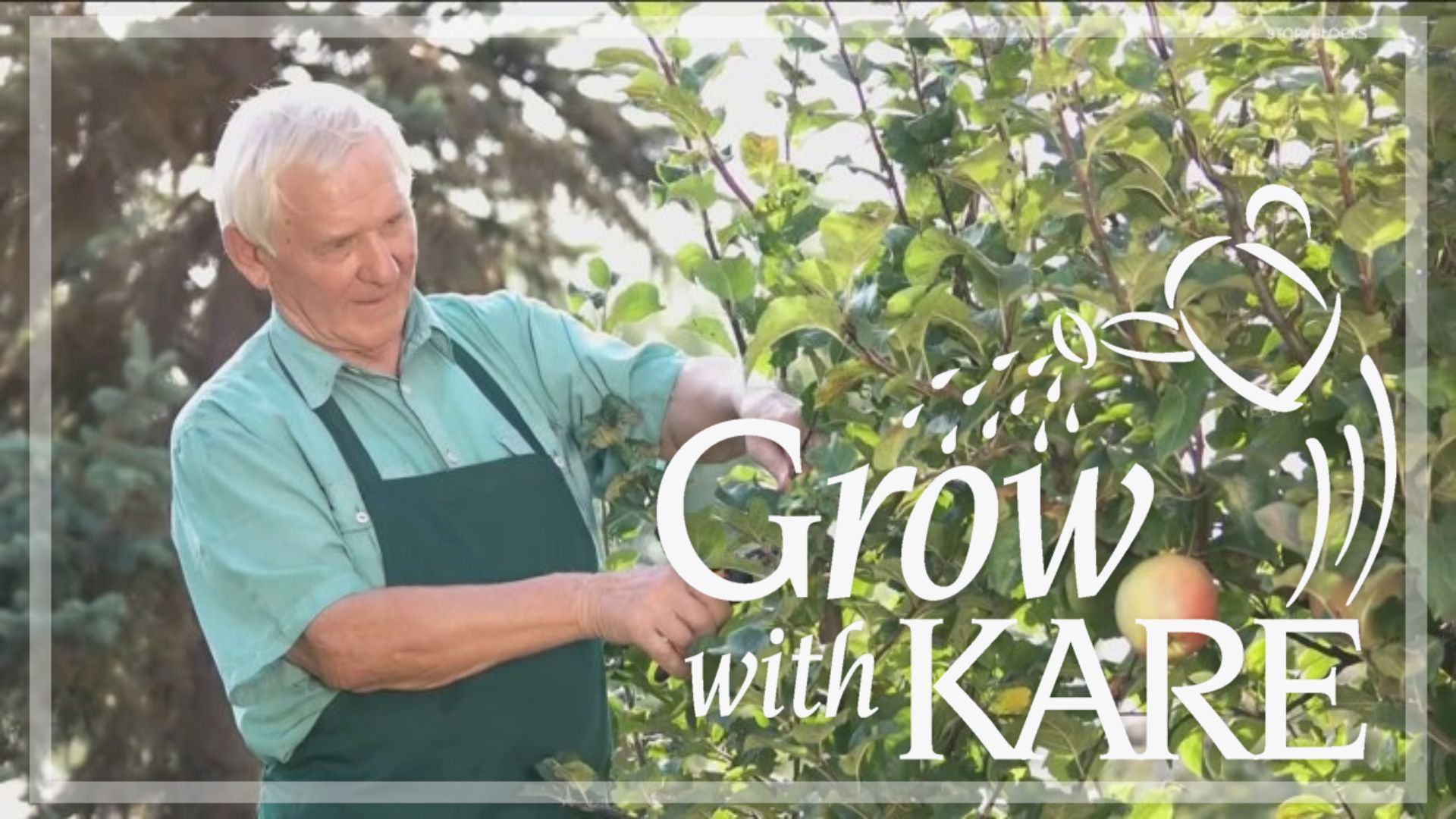ST PAUL, Minn. — In your own yard or driving around looking at someone else's trees, you might have noticed that crabapples look terrible this year.
Absolutely terrible.
The culprit is a fungal disease called Apple Scab.
Minnesota's overly wet spring is mainly to blame. Apple scab spores reproduce and then re-infect both apples and crabapples throughout the season whenever it remains wet enough... for long enough.
Pear trees, Mountain Ash and Cotoneasters can also be impacted by the same fungus.
Apple scab fungus infects both the fruit and leaves of the trees, often causing leaves to drop and fruit to be ruined. Sometimes that fruit may not be good-looking, it is still edible and excellent for cider.
While one year of infection doesn’t affect the health of a tree, several years in a row with the leaves dropping can weaken the tree and lead to long-term health impacts.
Here’s what you can do about it.
- Rake up and burn, bury or compost leaves in the fall before the first snow. The fungus overwinters in the soil.
- If you can’t rake up the leaves, chop them with a mulching lawnmower so they compost quickly.
- Prune your trees to allow for maximum airflow between the branches so leaves can dry quickly after rain.
- Remove water sprouts.
- When planting new trees, use a spacing that allows for the mature size of the tree and avoid overcrowding.
- Fungicides are only recommended for trees that have been infected 3 or more years in a row and should be used along with all of the above prevention strategies.
Read more about apple scab on the U of M Extension website.

